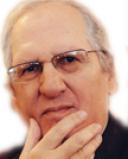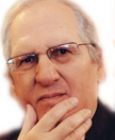Beauty
What Is Real Psychotherapy?
When someone goes for "therapy" today, what are they really getting?
Posted May 2, 2018

The field of psychotherapy has evolved (or devolved, depending on your point of view) drastically since the heyday of psychoanalysis a century ago. The person seeking therapy back in 1918, for example, would most likely see some disciple of Freud or Jung. Sessions would be scheduled for several (in some cases, perhaps as many as 5-6) days per week, and the patient would probably be expected to lie on a comfortable couch with the analyst or alienist (see my prior post) seated behind him or her, out of sight, listening intently, taking notes, and offering occasional interpretations of the unconscious significance of what was being said. Those interpretations would depend on the particular therapist's theoretical understanding of the patient, which, in 1918, would have been primarily Freudian, though Jung, by then, had broken with Freud and the Freudians, starting to attract followers of his own Analytical Psychology. (See my prior post.)
Psychoanalysis was the first systematic form of psychotherapy, which was fundamentally a psychological approach to neurosis and psychosis. A "depth psychology." It was predicated upon the concept of the "unconscious," which Freud defined as that which we don't know and don't want to know about ourselves: our unacceptable and, therefore, repressed feelings, thoughts, memories, motivations and impulses. The therapy process consisted of plumbing the depths of the unconscious, and making the unconscious more conscious.
Central to psychotherapy in those days was the interpretation of dreams, viewed by Freud as the via regia or regal road, or royal highway to the unconscious, the idea being that understanding our dreams--which, for Freud, are encoded manifestations of unconscious conflicts and wishes, and for Jung, valuable messages from the unconscious regarding how to become more whole and balanced--is the key to becoming more conscious, and thereby, less neurotic and symptomatic. In other words, both Freud and Jung saw excessive unconsciousness as the primary source of neurosis and psychosis. This sort of psychotherapy demanded (and still requires) serious commitment and investment--both emotional and financial--from the patient to the process, and tended to go on for protracted periods of time. But did it work?
This is exactly the same question we ask about psychotherapy today. Based on what we know now regarding the efficacy of psychotherapy in general, the answer is probably "yes." Psychotherapy in 1918 was likely more or less as effective as any psychotherapy available today. Indeed, according to a 1995 Consumer Reports survey conducted by positive psychologist Martin Seligman, more than 80% of contemporary psychotherapy patients reported beneficial results in general, and no single form of psychotherapy seemed, for the most part, to be more effective than another. Given the fact that psychoanalysis remained the predominant form of psychotherapy sought out by people well into the 1950s, and is still practiced today by some, it seems unlikely that it would have retained its popularity for more than half-a-century had it been totally ineffective.
But so much has changed in psychology and psychiatry since the mid-twentieth century. Starting in the 1930s, stimulated by the writings of former Freud disciple Otto Rank, psychodynamic psychotherapy, an approach distilled from psychoanalysis, but typically entailing fewer meetings per week and permitting face-to-face sessions with patients rather than the technique of using the couch, became widely accepted among mental health professionals, and is still practiced by many in some form.
Then, in 1958, psychologist Rollo May co-edited a book called Existence: A New Dimension in Psychiatry and Psychology, which introduced Americans to the work of the European "existential analysts." Their critique of classical psychoanalytic theory and treatment, coupled with the penetrating insights of philosophers like Kierkegaard, Nietzsche, Heidegger and Sartre, and based on what was described as the use of a "phenomenological method" in therapy, was highly influential for practitioners of psychoanalysis, psychodynamic psychotherapy, and other forms of depth psychology, giving rise to a more humanistic and existential approach to therapy.
Next, behaviorism, based on the work of B.F. Skinner, became the predominant paradigm for psychotherapy, supplanting psychoanalysis and psychodynamic therapy, particularly in academia. Then there was the psychopharmacological revolution, which has, by far, become, to this day, the predominant mode of treating most mental disorders. The 1960s and 70s saw the rebellious and experimental countercultural influence on psychotherapy, spawning Humanistic Therapy, Primal Therapy, Gestalt Therapy, and Family Systems Therapy, and, in the 1980s, psychologist Francine Shapiro's EMDR (Eye Movement Desensitization and Reprocessing) for treating trauma.
These new approaches (some saw them merely as technical tricks) were followed by the so-called Cognitive Revolution, which, alloying itself with behaviorism, led to the advent of today's extremely popular and pervasive cognitive-behavioral therapies, and the emphasis on supposed evidence-based, pre-scripted, standardized or manualized therapies. Currently, there are literally hundreds of different forms of psychotherapy available to consumers, all claiming to be superior to others, some citing specific scientific studies to support their often dubious claims. The person seeking assistance with psychiatric symptoms in the twenty-first century is confronted with a dizzying array of remedies. But this begs the question: Has psychotherapy really improved over the past hundred years? Or is it getting worse?
Most psychotherapists today are trained to take a predominantly technical, symptom-centered approach to treatment. CBT is a prime example of this standardized, manualized, mechanistic type of therapy designed specifically to reduce or suppress a patient's symptoms and suffering as quickly and economically as possible. Psychopharmacology--the mainstay of contemporary psychiatric treatment--is another example of a bio-mechanical, medicalized, symptom-centered orientation. But is this what real psychotherapy is about? Is this all psychotherapy has to offer? Rapid, rote symptom-reduction? Drugging away or suppressing emotional pain or discomfort? Rationally rooting out and restructuring the patient's "distorted" and irrational cognitions? Modifying and "normalizing" or making more socially acceptable his or her aberrant, eccentric or maladaptive behavior? To be sure, timely pharmacological relief of intolerable and crippling psychiatric symptoms is practical, valuable and sometimes life-saving. There is something to be said for the clinician's ability to alleviate or at least mitigate the patient's debilitating symptoms straight away. But ought that be the end or merely the beginning of therapy?
With the advent and wild popularity of psychopharmacological and brief cognitive-behavioral treatments today, is there any room or reason left in the therapeutic process to speak of esoteric subjects such as beauty, God, evil or death? To address the person's spiritual and existential concerns? To muse about the meaning of life, or the absurd lack thereof, and to endeavor to find and fulfill one's destiny? And is there still a segment of the postmodern population still interested in and committed to doing so? I wonder what you, our readers, have to say about that.
One of my former mentors, existential psychoanalyst Dr. Rollo May, passionately argued that psychotherapy should be less about technique or what he pejoratively called "gimmicks" designed to subdue symptoms than about enhancing the patient's capacity to feel, experience, create, find meaning, and in general to become more receptive and accepting to life and love in both their positive and negative aspects. In some ways, this is a radically divergent view on the nature, meaning and purpose of psychotherapy compared to the conventional, symptom-centered approach of today. Dr. May's neo-Freudian, and especially existential attitude toward psychotherapy and his humanistic emphasis on the healing power of the relationship between patient and therapist over the primacy of technique is closely related to that of C.G. Jung, who quipped that psychotherapy "demands all the resources of the doctor's personality and not technical tricks." Clearly, real psychotherapy of any sort depends partly on specific techniques. But the utilization of such techniques is secondary to and never a substitute for the working relationship between patient and therapist.
Another former mentor of mine, Jungian analyst Dr. June Singer (Boundaries of the Soul: The Practice of Jung's Psychology), taught that typically, the symptoms presented initially by patients seeking psychotherapy are not the primary problem, but rather represent, symbolize or mask a more fundamental underlying intrapsychic, interpersonal, sexual, existential or spiritual imbalance or conflict. Sigmund Freud, of course, was the first to formally recognize this fact and developed his own still controversial theory (psychoanalysis) to explain and resolve the intrapsychic source of these neurotic or psychotic symptoms. Freud famously focused on enhancing the patient's capacity to work and to love. One of his most innovative and ingenious techniques designed to unearth and reveal such conflicts was what came to be called free association: The patient, while lying on a couch, was encouraged to speak freely about whatever entered his or her mind at the moment. For Freud, the point of free association was to help make what was unconscious more conscious. During their free associations, Freud focused primarily (and seems to have been dogmatically fixated) on evidence of repressed infantile and childhood sexuality in his patients musings and memories.
But what happens when the psychotherapy patient spontaneously starts speaking in treatment not of implicit or explicit sexual conflict, nor of his or her various symptoms or interpersonal problems, but rather of more esoteric topics like beauty, God, death and evil? Is this still considered real psychotherapy? Certainly Jung and May both thought so. Some might say such subjects are inappropriate and superfluous--perhaps even taboo--in today's technique and dollar-driven therapeutic marketplace. But I question whether any mental health treatment which consciously or unconsciously excludes such basic spiritual or existential concerns can or should be considered real psychotherapy.
In his semi-autobiographical book My Quest for Beauty (1985), Rollo May relates his own rediscovery of beauty and its far-reaching therapeutic power. Finding himself as a very young man alone in a completely foreign culture for the first time and in the throes of a debilitating depression or "nervous breakdown," May accidently stumbles in this disoriented state of mind upon a gorgeous sea of wild poppies while wandering aimlessly in the hills of Greece, and experiences a life-altering epiphany: "I realized that I had not listened to my inner voice, which had tried to talk to me about beauty. I had been too hard-working, too ‘principled' to spend time merely looking at flowers! It seems it had taken a collapse of my whole former way of life for this voice to make itself heard." This sudden reawakening to beauty helped lift him out of his depressive funk and propelled him toward a new, less regimented and rigidly moralistic, more authentic, creative, vital life.
This is sometimes a problem in seekers of psychotherapy today: They have lost touch with their transcendent sense of beauty, being so totally preoccupied with and focused on their worldly interpersonal problems and distressing symptoms. May, who later briefly became a minister and then a clinical psychologist and psychoanalyst, shares the following excerpt from a therapy session with a woman he once treated who, up to this point, had been exclusively focused solely on her marital problems: "I stopped my car on the way here to look at the twilight. It was just beautiful, the purple hues with green hills, behind them. . . it is the most beautiful time of day. . . . I don't believe in a God, at least in a personal God, there is so much evil in the world, it makes it so pointless. But when I see such beauty, I can't believe it is by accident. . . . This time of day would be a good time to die, a good time to be alone. . . . I would like to die at this time. . . It is so peaceful here in your office. . . I keep noticing the beauty outside the window." Beauty, writes May, "is serene and at the same time exhilarating; it increases one's sense of being alive." The beauty of nature, for example, can inspire a profound sense of inner peace, joy and awe, helping to place our petty daily problems or even major life crises into cosmic perspective.
Now, some, including psychotherapists, might find this patient's talk of beauty, God, death and evil irrelevant to treatment, alarming, or possibly see it as a form of what Freud called "resistance." Indeed, the patient herself, recounts May, "expressed her fear that she had said nothing today, maybe it was all superficial talk. I assured her that no topics could be more important than beauty, God, death." What did May mean by that cryptic comment? He meant that psychotherapy, real psychotherapy, is not merely a process to "fix" or eliminate people's problems, symptoms and anxieties. Symptoms tend to abate as their deeper root causes are resolved. But we human beings will always have problems.
Real psychotherapy is about helping people to become more present, more whole, more free, more responsible for themselves, more authentic, more creative, more resilient, more courageous, more capable of love and compassion, and more aware of themselves and the world. It is about accompanying patients through and, whenever pragmatically possible, beyond their personal demon-filled hell toward accepting their fate and discovering and fulfilling their destiny. Or, at least, setting them on that path. This is a far cry from what frequently passes for psychotherapy today. And from what the vast majority of those seeking treatment seem to want.
The goal of real psychotherapy is to help the person learn to stand on his or her own two feet, to face and accept the stark existential facts of life--difficulties, struggles, suffering, disease, loss, frustration, disappointment, evil, death--with dignity and courage, while at the same time appreciating and being fully present to life's sublime pleasures, wonders and beauty. It is about becoming more authentically ourselves, and embracing both the hideous and beauteous, divine and diabolic, destructive and creative polarities of life that May poetically called the daimonic. But it appears that fewer and fewer individuals are looking for such an expansion of consciousness today, such a transformative experience. Instead, what they seem to want is simply to take a pill or subject themselves to some new method promising a quick fix, some rapid relief from their symptoms, so that they may rapidly return to their lifestyle and imbalanced conscious attitude which was the source of their symptoms to begin with.
The kind of psychotherapy I am describing here, what I am calling "real" psychotherapy, has less to do with the duration, frequency or cost of treatment than with how the psychotherapist views the nature and purpose of treatment itself. People have an innate need to ponder life's awesome mysteries. Real psychotherapy provides patients the opportunity, when needed, to grapple with these thorny questions--which are often closely, though unconsciously, related to their presenting problems. The goal of such therapy is to assist patients in finding their own philosophical or spiritual perspective in life, so as to be able to deal with future problems from a position of inner strength and stability.
If psychotherapy continues to be viewed as a carefully scripted, predetermined, mechanistic cookbook recipe of techniques designed just to rapidly reduce or eliminate certain troublesome symptoms or behaviors, such existential and spiritual subjects will increasingly seem moot. Patients receiving such severely limited treatment today are being tragically deprived of a much-needed chance to consciously wrestle with what theologian Paul Tillich called "ultimate concerns" like the problem of evil, suffering, spirituality, meaning and mortality.
We live today in a therapeutic culture that devalues talking or even thinking about such things. Today, psychotherapy patients are implicitly or explicitly discouraged to discuss or dwell on such soulful matters. But if psychotherapists and patients can recognize and respect the pragmatic therapeutic value, power and importance of addressing meaningful subjects such as beauty, God, evil and death in treatment, then maybe psychotherapy--real psychotherapy--has some chance of surviving.
Contrast what typically takes place in psychotherapy today with what C.G. Jung had to say about it more than fifty years ago:
"The patient has not to learn how to get rid of his neurosis, but how to bear it. His illness is not a gratuitous and therefore meaningless burden; it is his own self, the 'other' whom, from childish laziness or fear, or some other reason, he was always seeking to exclude from his life.. . . . We should not try to 'get rid' of a neurosis, but rather to experience what it means [my emphasis], what it has to teach, what its purpose is. We should even learn to be thankful for it, otherwise we pass it by and miss the opportunity of getting to know ourselves as we really are. "
Now, that's real therapy.




